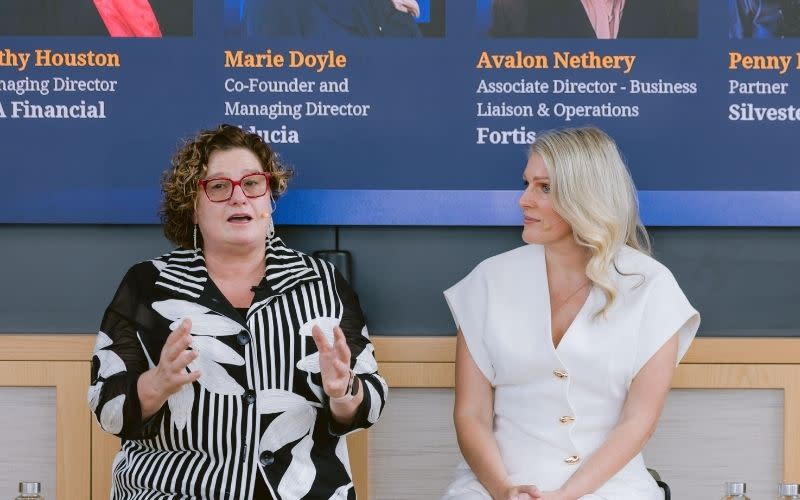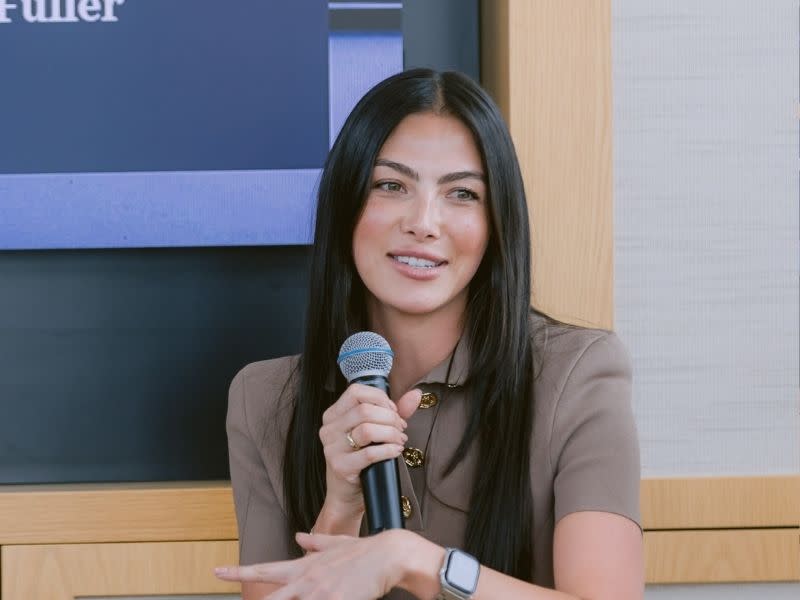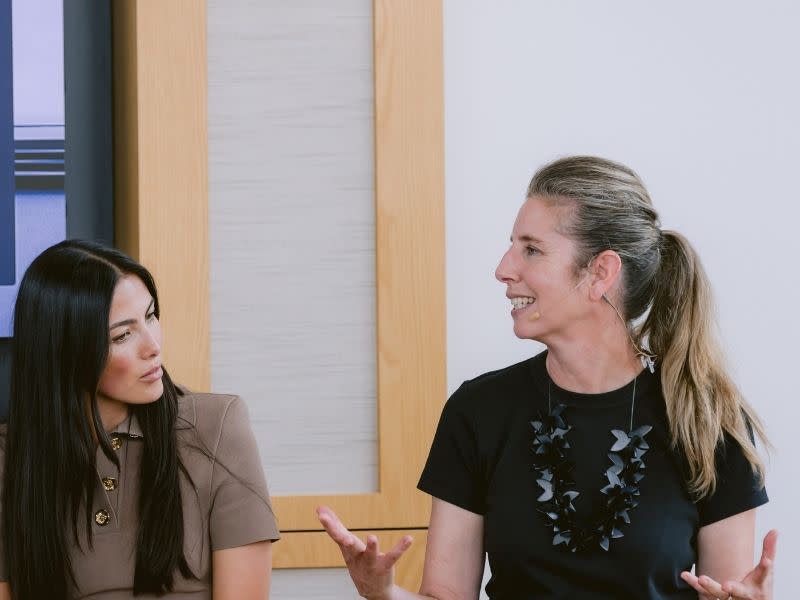The Women Shaping Property’s Future

Forty women shaping Australia’s property industry filled MA Financial’s boardroom in Sydney for The Urban Developer’s sold-out Women’s Leadership Lunch—a conversation about delivery, risk and leadership.
This was leadership spoken from experience—women directing capital, projects and design outcomes across the country.
The panel discussion, moderated by The Urban Developer managing editor Taryn Paris, brought together Fortis associate director Avalon Nethery, MA Financial managing director Cathy Houston, Silvester Fuller partner Penny Fuller and Fiducia managing director Marie Doyle (pictured above).
Across the conversation, five themes stood out—taking smart risks, calling out behaviour, building confidence, backing each other and creating opportunity for others.
Below are five takeaways from the discussion, reflecting the pressures and priorities shaping property right now.

Risk is a leadership practice, not a gamble
Cathy Houston, with nearly three decades in the lending and capital markets, framed risk as core business.
“The only way I make a return is to take a risk,” she said. “The only way the business runs is for me to lend money out to people and hope they get back to me in some point of time in the future.
“We do the groundwork, do the diligence to make sure we understand what the risks are … and then you can take the view.”
Her advice on career progression was equally direct.
“Someone cannot say yes to you unless you ask a question.”

Fortis’s Avalon Nethery—who also founded Borne, a postpartum wellness hotel at Double Bay—spoke of taking risks early and trusting herself to handle whatever comes next.
“You’ve got to take every single risk you can,” she said. “If the worst happens? I’ll still be here and I back myself to handle it.”
Architect Penny Fuller applied a design logic to uncertainty.
“You don’t know the answer but you know the process to get there,” she said. “Get comfortable with the unknown.”

Workplace culture changes when behaviour is challenged
Construction once felt rougher for women stepping into project leadership.
“Starting out in the construction side, I was the only woman on the site at Star Casino for some time,” Nethery said. “You got treated differently.”
Today, the environment she works in looks different.
“In our workplace [at Fortis], it’s certainly not at all men versus women. Everyone has an equal voice.”
Marie Doyle’s experience reflected another side of the same shift.
“There were Christmas parties with all the boys and I would not be invited to those, or the Friday barbecues where they’d all get together,” she said.

“But in terms of how we run development meetings ... I will a lot of the time be driving finance piece, driving a project, driving the vision for projects.
“There’s a deeper level of respect, I think from the men I’ve worked with in my career, thankfully, one of them being my husband.
“There’s a mutual respect that has to happen.”
Houston pointed to the broader change in how behaviour is now addressed.
“It’s OK to call it out and say it’s not appropriate,” she said. “You don’t have to suck it up anymore.”

Confidence comes from doing the work
Questions around confidence came up for women stepping into expanded responsibility.
Nethery described decision-making speed as a leadership muscle built through repetition.
“My role is to make decisions fast,” she said. “I might get 10 per cent of those decisions wrong but my role is to protect my director from having to make thousands of decisions a day.”
Houston placed resilience at the core of building confidence.
“You just have to get it done,” she said. “You get to the other side of something hard and you can draw on that. You are where you are for a reason.”
For Doyle, alignment between work and identity was grounding.
“I love what we do,” she said. “I’m excited to get up every day and share that with my children. That joy carries you through the hard days.”

Leadership is carried by the company you keep
Relationships proved to be the real support behind progression.
Leadership wasn’t presented as solo achievement but something shaped and reinforced by others.
Nethery spoke about the significance of her network.
“We’re all fighting something,” she said. “Everyone’s got something going on at home and then they’ve got to turn up, show up for work. To do that, you need good people around you.”
“My morning walk is my call with my girlfriends. It is important to have women around you who lift you up.”
Doyle emphasised the value of growing together.
“We’ve grown our business alongside consultants and partners who were building their own practices,” she said. “We lifted each other up along the way.”
Fuller described the grounding force of peers.
“I have a group of female architects who run their own practices,” she said. “We travelled together recently and talked and compared. That support is important.”
Opportunity grows when you leave space for others
Doyle spoke about modelling what is possible, so the path behind her widens rather than closes.
“We talk about this thing of leaving the door open,” she said. “You know, how can you leave the door open for other women in this industry? Say, ‘This is possible’.”

She said the impact extended to her home, where her daughters are watching and forming their own ambitions.
“It can be such an inspiration to your children watching you,” she said.
In a global moment preoccupied with whether women are changing workplaces for better or worse, the women in this room are focused on progressing projects, stewarding capital, developing teams and influencing the built form of cities.
The women in this room are not debating their role in the workplace, they’re shaping it for the next generation of leaders.















